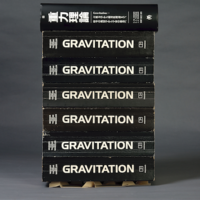Abstract
Traditional origami structures can be continuously deformed back to a flat sheet of paper, while traditional kirigami requires glue or seams in order to maintain its rigidity. In the former, nontrivial geometry can be created through overfolding paper, while in the latter, the paper topology is modified. Here we propose a hybrid approach that relies on overlapped flaps that create in-plane compression resulting in the formation of polyhedra composed of freely supported plates. Not only are these structures self-locking, but they have colossal load-to-weight ratios of order .
6 More- Received 27 February 2019
- Revised 30 October 2019
DOI:https://doi.org/10.1103/PhysRevX.10.011013
Published by the American Physical Society under the terms of the Creative Commons Attribution 4.0 International license. Further distribution of this work must maintain attribution to the author(s) and the published article’s title, journal citation, and DOI.
Published by the American Physical Society
Physics Subject Headings (PhySH)
Popular Summary
Paper folding is an old, elegant art, but without glue, tape, or clips, how do you make origami into furniture? After all, the folds and tucks are all made without tearing the paper and so the final construction can be smoothly unfolded to a flat piece of paper. However, the in-plane stresses of the paper can be exploited to frustrate this unfolding without explicit sticking, pasting, or pinning. To achieve this, we change the initial geometry of the paper by making cuts, akin to the methods of kirigami (a variation of origami), but instead of modifying the topology by gluing, we use the cuts to allow for overlapping sections of paper.
In this work, we create structures that can support many times their weight, are light, and can be shipped flat, folding into the desired shape when needed. We demonstrate this with ordinary cardboard and provide an explanation as to how the interleaved assembly of the kirigami edges along with the periodic structure of the folds and cuts creates a mechanism to transfer downward force into shear stress, allowing a piece of cardboard to support 14 000 times its weight without pins or adhesives.
We conclude that the superstrength arises from a change in boundary conditions on the supporting walls. We transfer our construction to plastic sheets and copper foil and demonstrate that the collective effect of the folds, cuts, and stresses can be transferred to other materials. This provides a new set of motifs for lightweight, deployable structures. Someday, you might sit on it.



